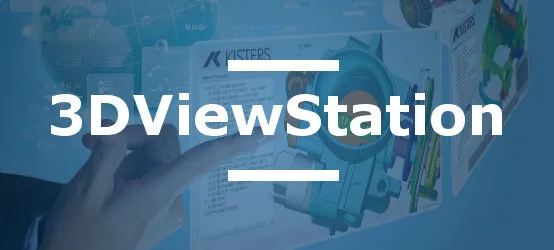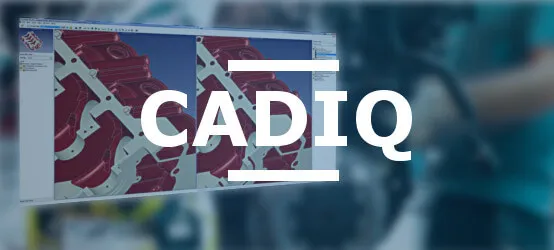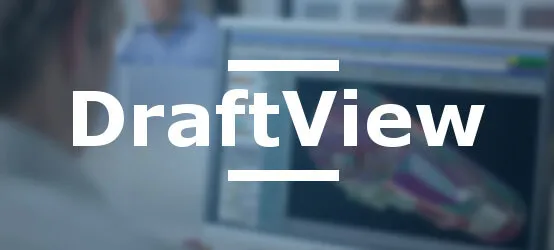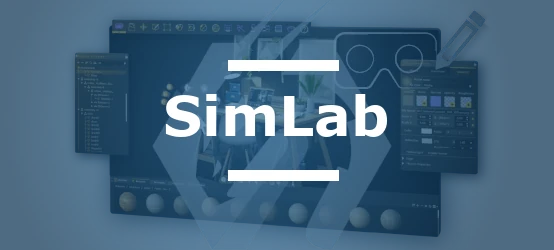Table of Contents
- Introduction
- Understanding CAD Data Formats
- Proprietary CAD Formats
- Neutral Formats for Interoperability
- Mesh and Visualization Formats
- Point Cloud Formats
- How to Choose the Right Format
- Why Some Exchanges Fail
- Technical Standards and Norms
- Practical Recommendations
CAD data interoperability represents a major technical challenge in multi-system industrial environments. CAD engineers and technicians face daily challenges in converting between proprietary formats, neutral formats, mesh formats, and 3D digitization data.
This technical problem manifests in four main scenarios: migration between native CAD systems, archiving with standardized neutral formats, conversion to mesh formats for simulation and visualization, and exploitation of point clouds from laser scanning technologies.
Understanding CAD Data Formats
Technical Definition of Formats
A CAD data format defines the organizational and representation structure of geometric, topological, and business information in a digital medium. This normalized convention encodes geometric data types as binary or ASCII sequences, allowing computer tools to locate and interpret each element precisely.
CAD data formats encapsulate various information: BREP geometry (Boundary Representation), tessellated meshes, PMI annotations (Product Manufacturing Information), material properties, and assembly structure. Interoperability refers to the technical ability to exchange this structured data between different software without critical information loss.
Technical Classification of Formats
CAD formats are divided into four distinct technical categories:
- Proprietary formats optimized for specific CAD systems
- Neutral formats compliant with international standards
- Mesh formats for visualization and numerical simulation
- Point cloud formats for 3D digitization data
Proprietary CAD Formats
Technical Characteristics of Native Formats
Proprietary formats optimize performance and functionalities specific to each CAD system. CATIA V5 uses .CATpart and .CATproduct extensions for parts and assemblies, supporting versions V5 R8 to V5-6 R2024. Creo ProEngineer employs .prt and .asm formats, compatible from ProE 2001 to Creo 11.0.
NX relies on the unique .prt extension for parts and assemblies, covering versions UG11 to NX 2406. SolidWorks uses .sldprt and .sldasm, supporting versions 98 to 2025. AutoCAD employs .dwg and .dxf for 2D/3D geometry, compatible from versions 9 to 2025.
Geometric Engines and Interoperability
Several CAD systems share common geometric engines, facilitating interoperability. Parasolid equips NX, SolidWorks, and Solid Edge, supporting versions 9 to 37.0. ACIS powers various CAD systems with versions R1 to 2024 1.0.1 R34. This common architecture enables direct exchanges without geometric translation.
Neutral Formats for Interoperability
STEP: International Reference Standard
STEP (Standard for the Exchange of Product Data) constitutes the most comprehensive neutral format according to ISO 10303 standard. Application protocols AP203, AP214, and AP242 cover basic geometry, automotive, and aerospace with advanced PMI respectively.
STEP AP242 integrates semantic PMI annotations, saved views, and validation properties, meeting current industrial requirements. This format ensures complete modification traceability and maintains geometric integrity during inter-system exchanges.
IGES: Stabilized Historical Format
IGES (Initial Graphics Exchange Specification) remains used for basic geometric exchanges, supporting versions 1.0 to 5.3. Although less rich in metadata than STEP, IGES guarantees extended compatibility with legacy systems and specialized applications.
JT: Optimization for Visualization
JT (Jupiter Tessellation) developed by Siemens PLM optimizes exchanges for visualization and collaboration. Compatible from versions 6.4 to 11.5, JT combines BREP geometry and faceted representation, enabling efficient rendering of large industrial assemblies.
Mesh and Visualization Formats
Formats Optimized for 3D Display
Mesh formats transform BREP geometry into faceted representation for visualization and simulation. STL remains the standard for rapid prototyping and 3D printing, supporting only triangulated geometry without colors or textures.
OBJ offers more richness with texture, color, and normal support, suitable for architectural visualization applications. Autodesk's FBX integrates animations and complex materials, with version 7.5 commonly supported.
glTF: Emerging Web Standard
glTF (GL Transmission Format) version 2.0 is establishing itself for web applications and virtual/augmented reality. This format optimizes loading times and display quality for web browsers and mobile platforms, with support for animations and PBR materials (Physically Based Rendering).
Point Cloud Formats
Standards for Digitization Data
E57 constitutes the ASTM standardized format for multi-sensor point clouds, ensuring interoperability between different laser scanning systems. PLY offers a flexible alternative supporting coordinates, colors, and normals for precise 3D modeling.
LAS and LAZ (compressed) dominate topographic and airborne LIDAR applications. These formats include classification metadata, return intensity, and temporal information essential for geospatial analyses.
Specialized Proprietary Formats
Manufacturers develop optimized formats: Faro FLS, Leica PTX, Trimble for their respective ecosystems. Conversion to standard formats like E57 or PLY guarantees interoperability with third-party CAD software.
How to Choose the Right Format
Technical Selection Criteria
Format choice depends on several technical factors: type of use (exchange, archiving, visualization), required level of detail, target system compatibility, and file size constraints. For inter-CAD exchanges, STEP AP242 offers the best completeness.
For visualization only, faceted formats (STL, OBJ, glTF) suffice with lighter files. Common geometric engines (Parasolid, ACIS) allow direct exchanges without information loss.
Comparative Table of Main Formats
| Format | Type | Geometry | PMI | Animations | Size | Recommended Usage |
|---|---|---|---|---|---|---|
| STEP AP242 | Neutral | BREP + Facets | Yes | No | Medium | Industrial exchange |
| Parasolid | Engine | BREP | Limited | No | Small | Compatible inter-systems |
| JT | Neutral | BREP + Facets | Partial | No | Optimized | Collaborative visualization |
| glTF | Mesh | Facets | No | Yes | Small | Web/VR applications |
| STL | Mesh | Facets | No | No | Small | Prototyping/3D Printing |
| E57 | Point cloud | Points | No | No | Variable | Laser scanning |
Why Some Exchanges Fail
Common Geometric Problems
Interoperability failures often result from geometric limitations: complex non-NURBS surfaces, different tolerances between systems, degenerate geometry (null edges, invalid faces), and unit differences. Validation tools like CADIQ detect these defects before exchange.
Version Incompatibilities
Format evolutions create incompatibilities: CATIA V5 R2024 may generate files unreadable by earlier versions, STEP formats with non-standardized proprietary extensions, incompatible JT versions between systems. Version compatibility verification proves crucial.
Technical Standards and Norms
Applicable ISO Standards
ISO 10303 (STEP) defines the normative framework for product data exchanges. Specialized application protocols cover different sectors: AP203 for general design, AP214 automotive, AP242 aerospace and defense with complete PMI.
ISO 14306 standardizes JT for industrial visualization. ASTM E2807 specifies E57 for point clouds. These standards guarantee interoperability and technical data sustainability.
Certifications and Compliance
Certified solutions ensure compliance with industrial standards. CADfix has Daimler certifications for JT v10.5 exchanges. STEP conformity tests guarantee adherence to geometric and PMI specifications.
Practical Recommendations
Exchange Best Practices
To optimize CAD data exchanges, prioritize STEP AP242 for complete industrial exchanges with PMI. Use native geometric engines (Parasolid, ACIS) when possible to avoid translations. Systematically validate geometry before and after conversion.
Archive in standardized neutral formats for long-term sustainability. Document conversion parameters and software versions used. Establish quality validation protocols with precise geometric criteria.
Faceted 3D PDF formats constitute an interesting alternative for read-only sharing, combining 3D visualization and universal compatibility. This approach meets technical communication needs without requiring specialized CAD software.
Successful CAD data interoperability relies on understanding the technical specificities of each format and adapting to operational constraints. The optimal format choice depends on the usage context, involved systems, and required fidelity level for exchanged technical data.

